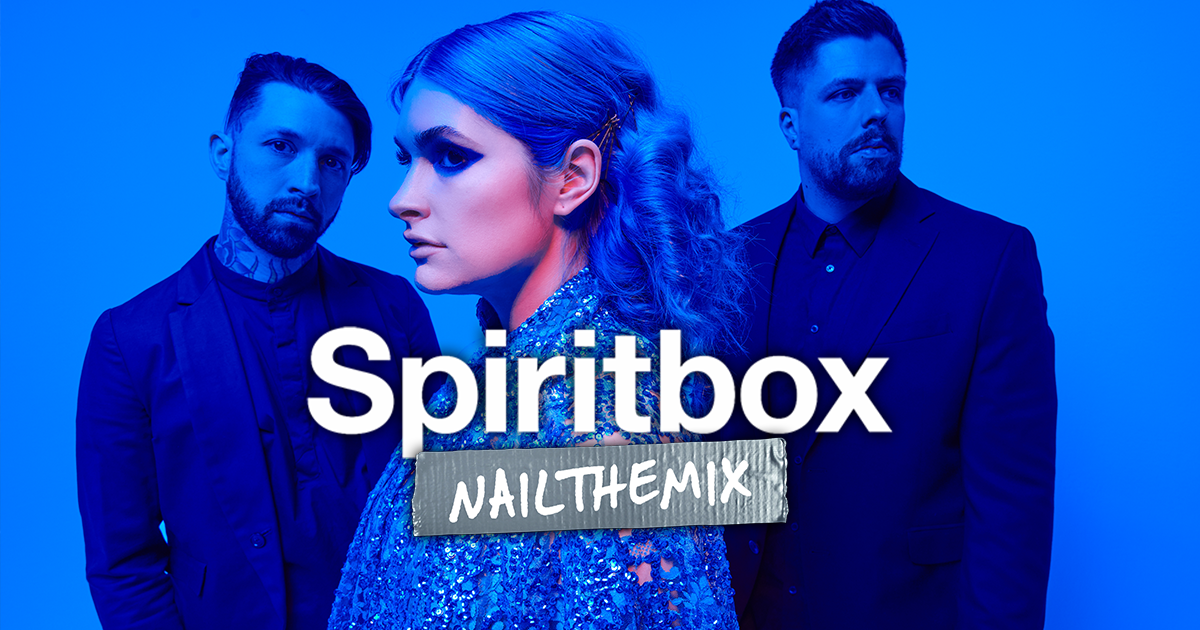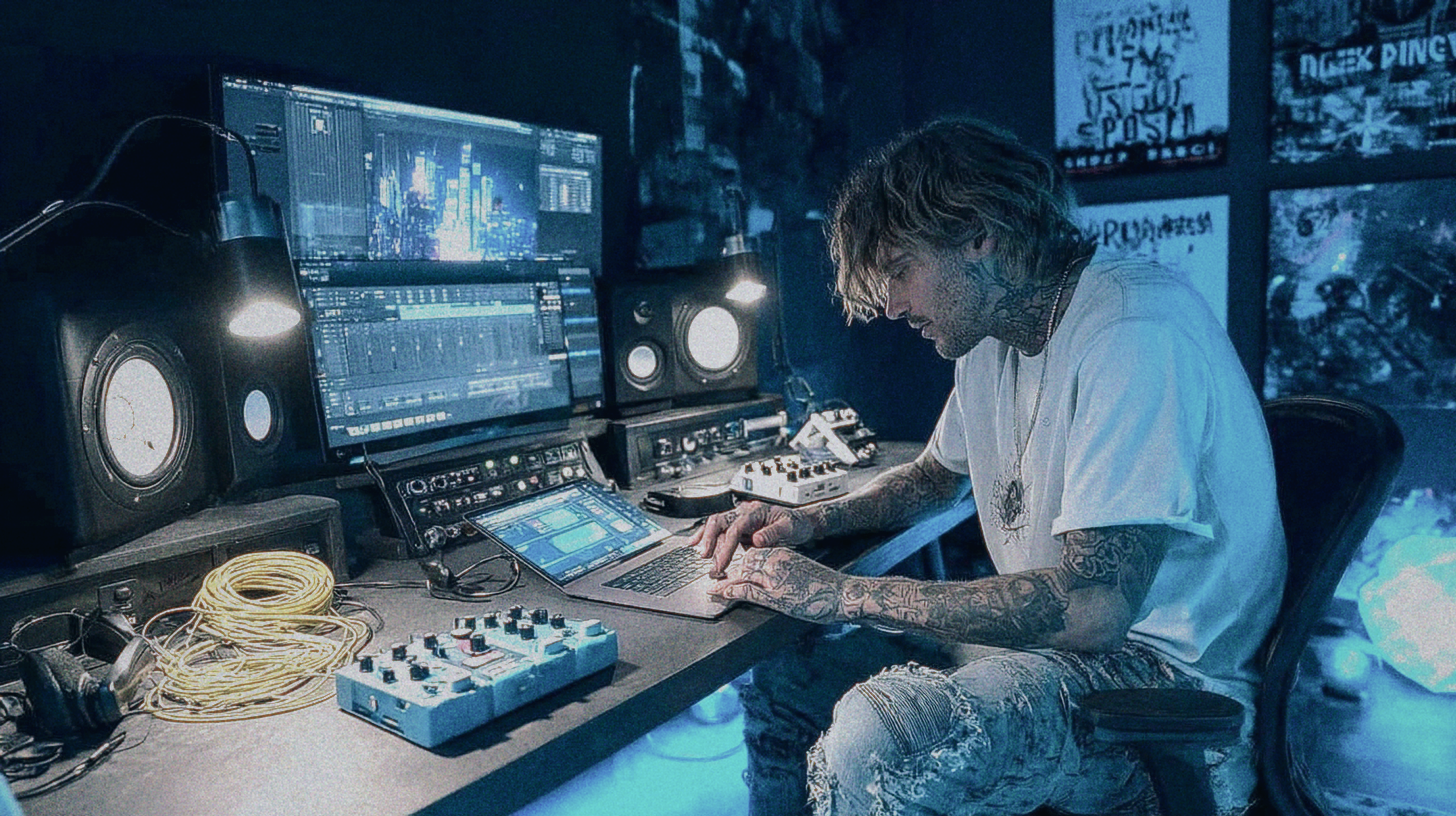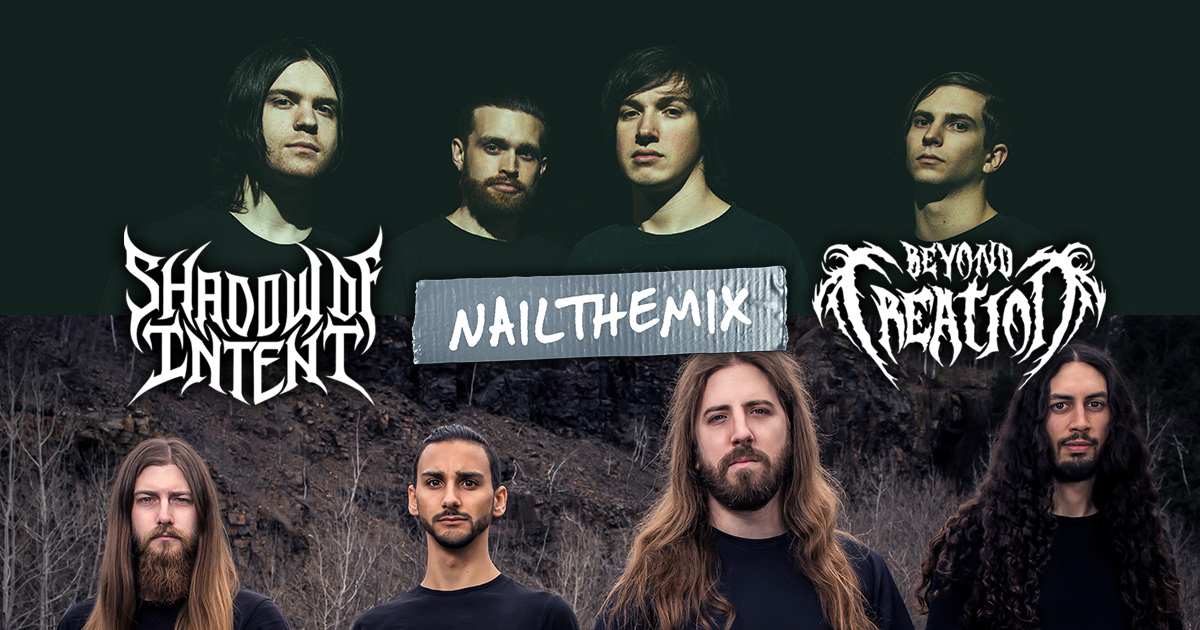
Creating Spiritbox’s ‘Holy Roller’ Vocoder Effect with Daniel Braunstein
Nail The Mix Staff
The intro to “Holy Roller” by Spiritbox is unmistakable. That rhythmic, demonic, vocoded vocal grabs you immediately and sets a seriously heavy tone. Ever wondered how they cooked that up? It’s not just one effect; it’s a creative chain of processing that turns a simple spoken line into a piece of devastating ear candy.
In his session with us, producer Daniel Braunstein tore back the curtain on exactly how he and the band crafted this iconic vocal part. Forget simple presets; this is a masterclass in texture, rhythm, and clever production tricks. If you want to see exactly how he pieces together the entire mix, you can watch the full session on Nail The Mix. For now, let’s break down that wild intro vocal.
The Foundation: It All Starts with a Spoken Word Take
Here’s the first surprise: that intricate, rhythmic part wasn’t sung. The raw material was a simple, dry recording of vocalist Courtney LaPlante speaking the lines:
“Holy Roller sits in the garden, we fled blood into wine, take my body instead…”
That’s it. A clean, spoken-word performance. This is a crucial starting point because it provides a clear, transient-rich signal to feed into the effects chain, giving the vocoder and saturators a lot of phonetic information to chew on.
Crafting the Rhythm with a Vocoder and MIDI
The core of this sound comes from turning that spoken take into a melodic, rhythmic instrument. This is where modern vocal processing gets really fun.
Enter iZotope VocalSynth 2
The main workhorse for this effect is iZotope’s VocalSynth 2. Instead of using it in a simple auto-mode, Daniel set it to MIDI Mode. This allows you to “play” the vocoder effect using MIDI notes, essentially telling the plugin what notes to output and when. The audio from Courtney’s vocal acts as the modulator, while the MIDI provides the pitch and rhythm.
Playing the Part: Triggering the Vocoder
This is the key to the entire effect’s unique pulse. Daniel didn’t just hold down chords; he actually played a specific MIDI performance on a keyboard. He carefully timed the start and end of each MIDI note to match the cadence of Courtney’s spoken delivery.
Because a vocoder only produces sound when it receives both an audio signal and a MIDI signal, starting and stopping the MIDI notes creates that cool, stuttering, rhythmic effect that follows her voice perfectly. It’s a brilliant way to add a pulsing, synthetic groove to a vocal that wasn’t originally rhythmic.
Adding Grit and Character: The FX Chain
With the main vocoder part programmed, the next step was to add layers of texture and aggression to make it fit in a heavy metal track. Just like using precise [metal EQ strategies](https://www.nailthemix.com/carve-your-core-eq-strategies-for-mixing-modern-metal) to carve out space, adding targeted saturation helps the effect cut through and feel larger than life.
Gnarly Saturation with FabFilter Saturn
After VocalSynth, the signal runs into FabFilter’s Saturn. Daniel kicked on the “Rectify” setting, which provides an absolutely destructive, “psychotic mouse demon” style of distortion. Of course, cranking this to 100% would be way too much. The trick is to blend just a little bit of that gnarly rectified signal in with the main vocoder sound, adding a layer of high-frequency grit and aggression without completely destroying the core tone.
A Touch of Space
To give the effect a bit of its own ambience and prevent it from sounding bone-dry, a touch of reverb from a Valhalla plugin was added. It’s a subtle move, not meant to be a huge wash, but just enough to give the vocal its own three-dimensional space in the mix.
The “Holy Roller” Hip-Hop Drop
When Courtney delivers the title-track callout, “Holy Roller,” the effect shifts. The goal was to create a massive, impactful moment, like a hip-hop beat drop that serves as a call to action.
Doubling Down on VocalSynth
To achieve this, Daniel used two more instances of VocalSynth 2. This time, they were set to Auto Mode. These instances were used to pitch her voice down and add even more vocoder layers, creating a deep, commanding tone.
Creating Massive Stereo Width
Here’s a classic production trick for getting huge width. The “Holy Roller” vocal take was duplicated. One copy was panned hard left, and the other hard right. Then, one of the takes was shifted slightly forward or backward in time by just a few milliseconds.
This slight timing difference between the left and right channels creates an ultra-wide stereo image that makes the vocal feel like it’s wrapping around your head. It’s a simple but incredibly effective technique for making a key phrase or moment explode out of the speakers.
Bringing It All Together
So, that iconic vocal sound is a combination of:
- A creative source: Starting with a spoken-word take.
- Rhythmic processing: Using VocalSynth in MIDI mode and “playing” the effect.
- Textural layering: Blending in aggressive saturation with FabFilter Saturn.
- Impactful widening: Using multiple plugins and the Haas trick for the big “Holy Roller” moment.
These techniques are powerful tools you can apply in your own productions right now. But seeing how they fit into the context of a full, slamming metal mix is a whole other level. In the full [Spiritbox “Holy Roller” mixing session](https://www.nailthemix.com/ntm/spiritbox-2020), Daniel Braunstein shows you not just this trick, but how he dials in the crushing guitars, thunderous drums, and aggressive bass to create the final product.
Spiritbox on Nail The Mix
Daniel Braunstein mixes "Holy Roller"
Get the Session
If you’re ready to move beyond presets and learn how world-class producers get their signature sounds, check out [Nail The Mix](https://www.nailthemix.com/). Every month you get the real multi-tracks from a massive song and watch the original producer mix it from scratch, explaining every plugin, every fader move, and every decision along the way. It’s time to [unlock your sound](https://www.nailthemix.com/unlock-your-sound-mixing-modern-metal-beyond-presets) and make your mixes compete.
Get a new set of multi-tracks every month from a world-class artist, a livestream with the producer who mixed it, 100+ tutorials, our exclusive plugins and more
Get Started for $1





